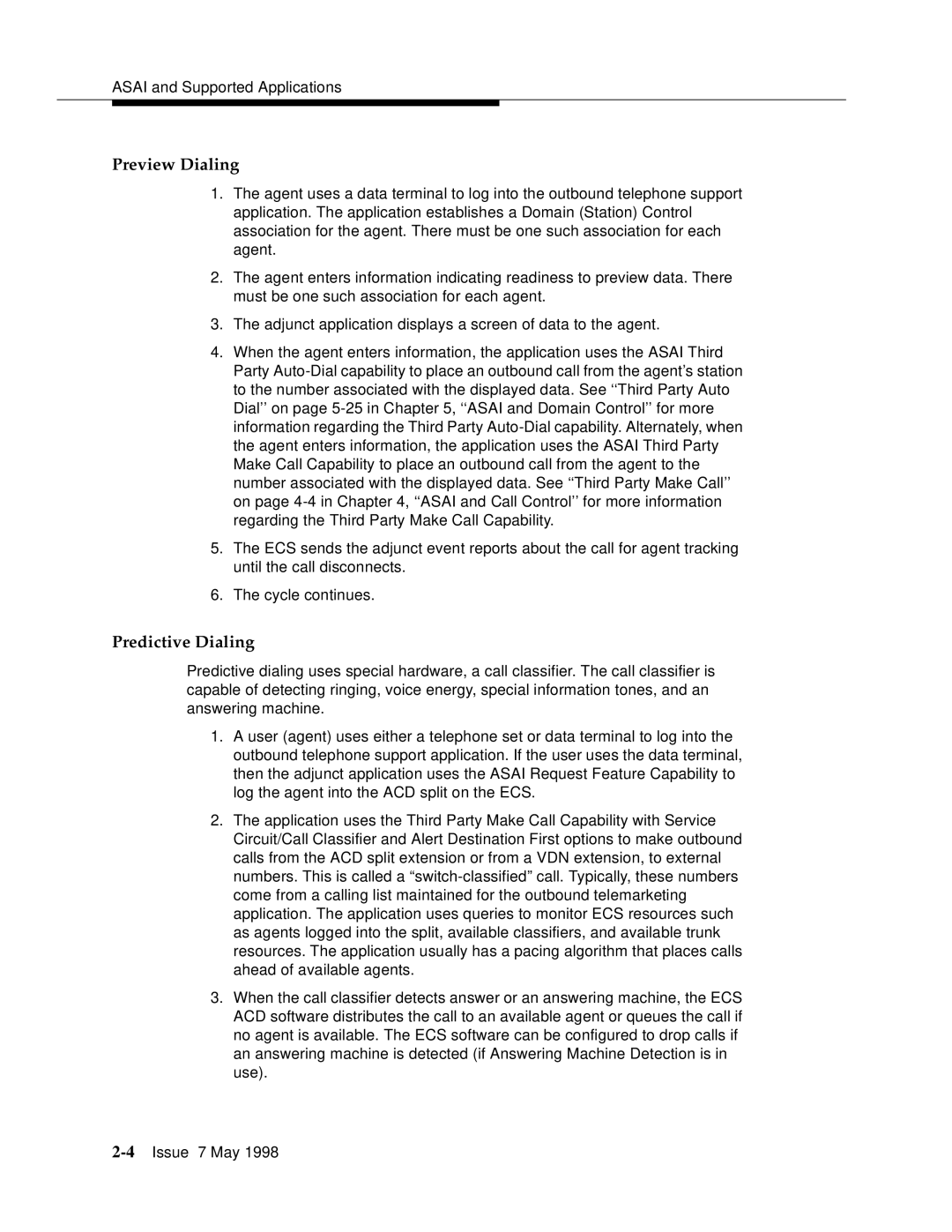ASAI and Supported Applications
Preview Dialing
1.The agent uses a data terminal to log into the outbound telephone support application. The application establishes a Domain (Station) Control association for the agent. There must be one such association for each agent.
2.The agent enters information indicating readiness to preview data. There must be one such association for each agent.
3.The adjunct application displays a screen of data to the agent.
4.When the agent enters information, the application uses the ASAI Third Party
5.The ECS sends the adjunct event reports about the call for agent tracking until the call disconnects.
6.The cycle continues.
Predictive Dialing
Predictive dialing uses special hardware, a call classifier. The call classifier is capable of detecting ringing, voice energy, special information tones, and an answering machine.
1.A user (agent) uses either a telephone set or data terminal to log into the outbound telephone support application. If the user uses the data terminal, then the adjunct application uses the ASAI Request Feature Capability to log the agent into the ACD split on the ECS.
2.The application uses the Third Party Make Call Capability with Service Circuit/Call Classifier and Alert Destination First options to make outbound calls from the ACD split extension or from a VDN extension, to external numbers. This is called a
3.When the call classifier detects answer or an answering machine, the ECS ACD software distributes the call to an available agent or queues the call if no agent is available. The ECS software can be configured to drop calls if an answering machine is detected (if Answering Machine Detection is in use).
